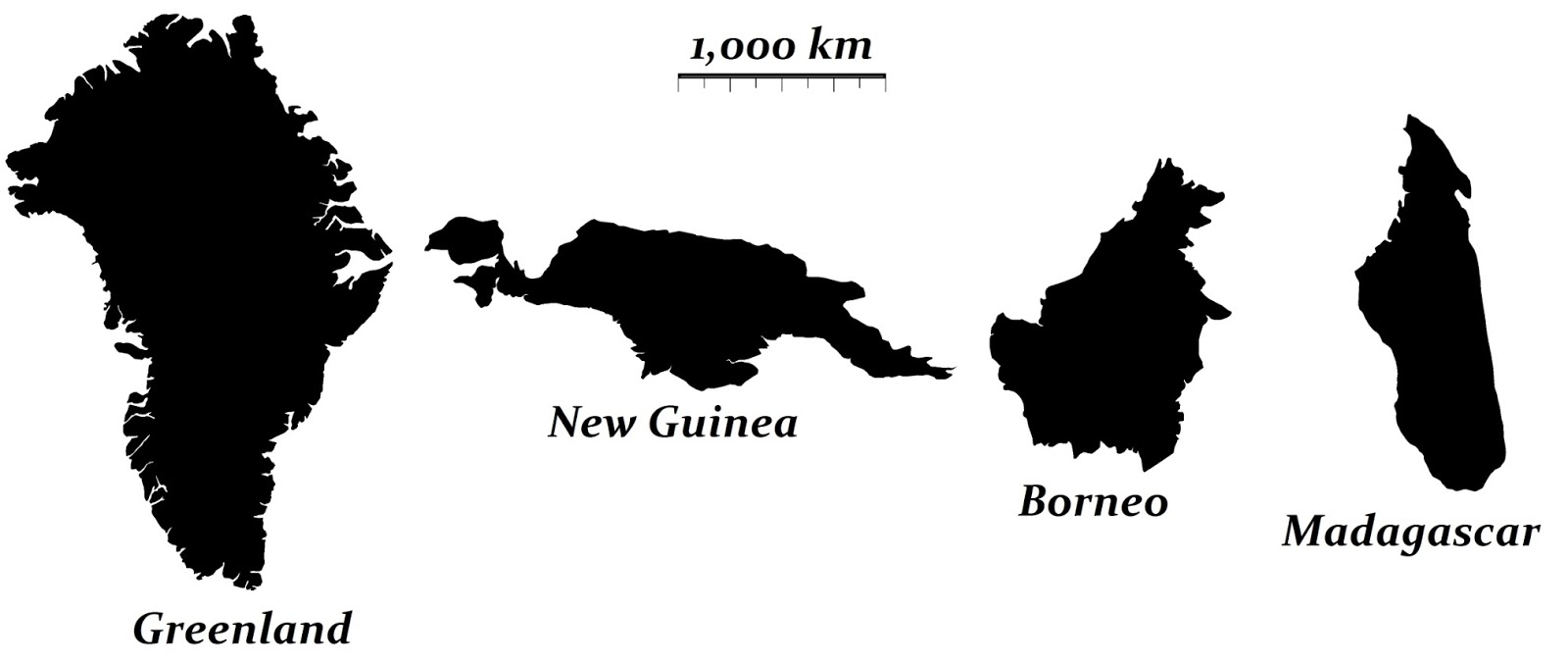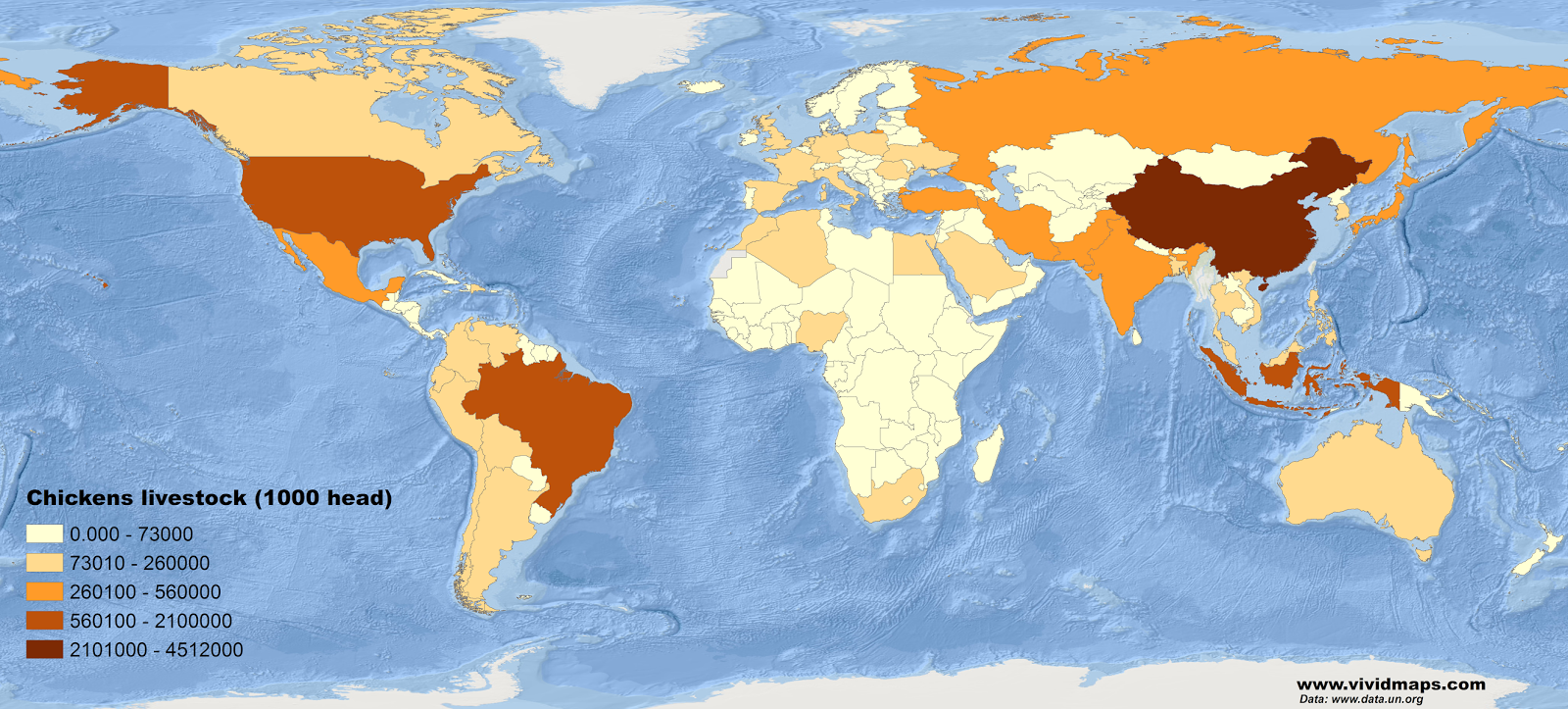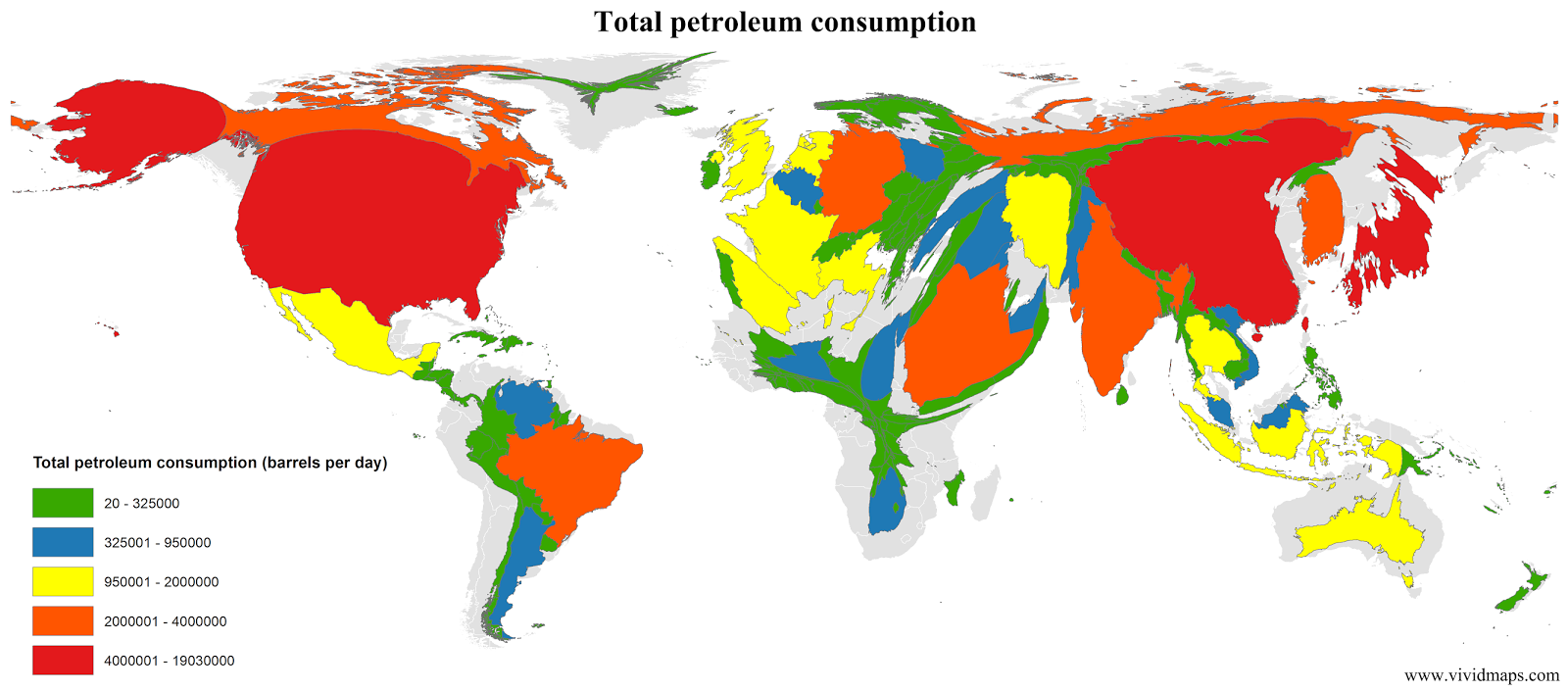Bafflin’ Islands: How Many Big Ones Can You Name?
Here’s a question that can turn any pub quiz into a pub brawl: Which is the world’s largest island? In the left corner, those who favour Greenland. In the right, the pro-Australians. Fighting it out is as good a way to settle the dispute as any, because there is no correct answer.
Not that both places are the same size – far from it: at nearly 7.62 million km2 (2.94 million sq mi), Australia is 3.5 times as big as Greenland, which measures almost 2.17 million km2 (836,000 sq mi).
That makes Australia almost exactly as big as the contiguous U.S. [from the Latin ‘contiguus’, meaning ‘Lower Forty-Eight’], and Greenland a bit smaller than Algeria, Africa’s largest country. If you thought Greenland was almost exactly as big as Africa, you fell for the Mercator projection, which helps sailors get from port A to port B in a straight line on the map [a.k.a. a rhumb line, or a loxodrome], but only at the cost of increasing the distortion of the land masses towards the poles. In actual fact, Africa is 14 times the size of Greenland. Like so:
But back to the geographical fisticuffs.
The whole thing hinges on your definition of island, or more exactly, on your definition of continent. An island is any land entirely surrounded by water – just as long as it’s smaller than a continent. So what’s a continent? Well: a very large land mass [the vagueness of that definition explains the different counts. The
minimalist option is three continents (America, Afro-Eurasia,
Australia). The four-continent model adds Antarctica. The five-model one
counts Africa and Eurasia separately. There are two six-continent
models: one separating Europe and Asia, the other splitting North from
South America. Subtracting Antarctica from either leads to an
alternative five-continent model. The seven-continent model includes all
aforementioned parts separately]. What keeps one from being the other? Nothing more than the convention that you can’t be both at the same time.
Quite arbitrary indeed, and easily brushed aside by Australia’s teachers, who can’t resist imparting to their students the beautiful symmetry of a questionable fact: that their country is the world’s smallest continent, as well as its largest island.
To the rest of the world, that’s a clear case of wanting to have your cake and eat it too. So Greenland gets the green light: most observers agree that it is the world’s biggest island.
Now that that is settled, do you know which is the world’s second-biggest island? If your a geo-nerd, you may know that it’s New Guinea, the island split between Indonesia and the independent state of Papua New Guinea [One of only four islands on this map divided between two (or more)
sovereign states. The others are Borneo (Malaysia, Brunei, Indonesia),
Ireland (the republic of Ireland and the UK), Hispaniola (Haiti and the
Dominican Republic)]. Extra points if you know that numbers three and four are Borneo and Madagascar.
But that is about where our heady mix of knowledge, luck and intuition would run out. For future reference (and highly specialised pub quizzes), memorise this roster of the world’s 26 biggest islands. Peek all you want, but look away after a minute or so. Now how many can you name?
They sure are a collection of strange bedfellows. Number five is Baffin Island, in Canada’s Arctic, frozen and desolate (population: 11,000). Number six is Sumatra, another tropical pearl in the string of islands that is Indonesia (population: 50 million). Filling out the second row are Japan’s main island Honshu (pop: 103 million) and another one of Canada’s northern islands, Victoria (pop: 2,000).
Great Britain, at #9, is the first European entry. With 61 million inhabitants, it is the third most populated island in the world (Honshu is the second). At #10, Ellesmere Island is Canada’s northernmost and most desolate island (population: about 100 shivering souls). It bears a strange resemblance to Westeros, the main continent in the Game of Thrones universe. Sulawesi, at #11, is another Indonesian island, and also has a shape reminiscent of elsewhere. New Zealand’s South Island (#12) shares the prize for most generic name with its North Island (#14). Combined, they are home to 4.5 million kiwis [Common nickname for the inhabitants of New Zealand. Not to be confused
with the fruit or the various bird species of the same name. For more
info, go to Kiwipedia.]. That is less than 1/30th of the population of Java, the island separating them in the size ranking. With 145 million inhabitants, Java is the world’s most populous island (density: over 1,100 people per km2), representing almost 60% of Indonesia’s total.
Not Indonesian but from around there, Luzon (#15) is the main island of the Philippines. Newfoundland (#16) is one of five Canadian islands on this map, but could have been an independent nation of its own, had that 1948 referendum gone the other way (see also #31). Cuba (#17) and Iceland (#18) are two of the four islands on this map that are also independent nations [The other two are Madagascar and Sri Lanka.]. Mindanao (#19) is the other large Filipino island on the map. Its neighbour Ireland (#20) is used to having Great Britain next door, but probably won’t mind the change.
Hokkaido (#21) and Sakhalin (#23) are also geographical neighbours,
separated by a size sibling, Hispaniola (#22). Banks Island (#24) is
probably the least familiar name of the bunch. Frozen and treeless, this
Canadian island is home to no more than 112 people – all in the
‘capital’, Sachs Harbour – and two-thirds of the world’s population of
lesser snow geese. Bringing up the rear are Sri Lanka (#25) and Tasmania
(#26).
Nice about this map is not just that it’s a handy cheat sheet for that island/continent-themed pub quiz that will probably never happen, but also that the islands are brought together in the same scale (eat that, Mercator!). So it’s obvious at a glance how much bigger Madagascar is than Britain, for example. Or that Hispaniola and Hokkaido are virtually the same size (world maps tend to stretch the latter, making it appear much bigger).
Frank Jacobs
Via bigthink.com














